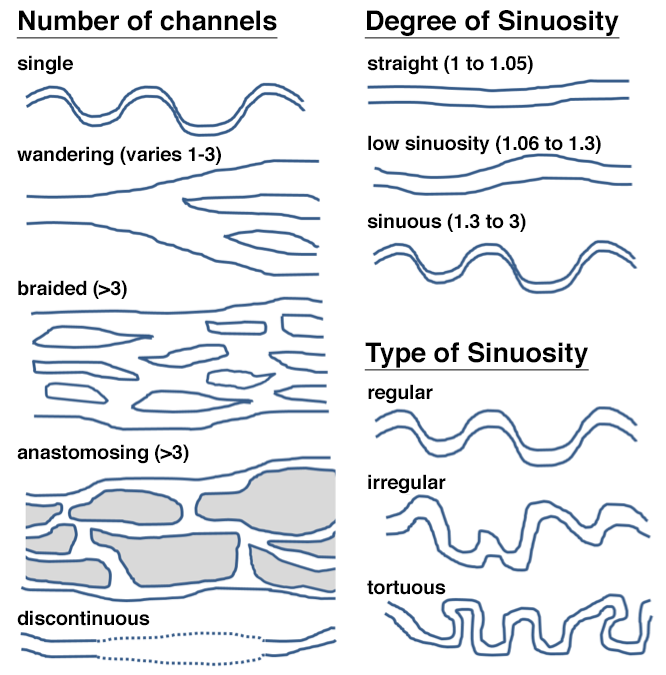Number of Channels and Sinuosity
While the variety of river types is best thought of as a continuum, rather than a bunch of discrete boxes, it is often useful in science to create a taxonomy to classify items for the purpose of description and communication. Figure 30 illustrates some of the most common characteristics by which rivers can be classified (see Brierley and Fryirs, 2005 or Montgomery and Buffington, 1997 for detailed discussions of channel classification). At the most basic level it is useful to classify rivers according to the number of channels they contain, from single-threaded to braided (with more than three interweaving channels that are frequently reorganized) to anastomosing (which typically have somewhat stable, vegetated islands between channel threads), to discontinuous streams that have un-channelized reaches). Wandering rivers are those that alternate between single-threaded and slightly braided reaches. Another useful metric, particularly for single-threaded channels is sinuosity, which is calculated as the length along the river divided by the straight-line distance along the river valley. Rivers can have sinuosity ranging from one up to three (i.e., the river length is three times longer than the valley). Bends in rivers are called meanders. Meanders can exhibit a variety of forms with some in nature being remarkably regular (see the Fall River in Rocky Mountain National Park in Google Earth) and others being irregular or tortuous (frequently folding back on itself).

